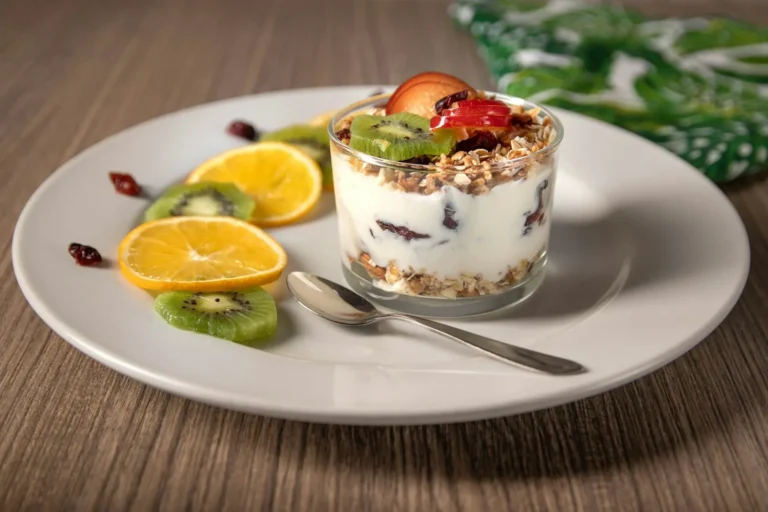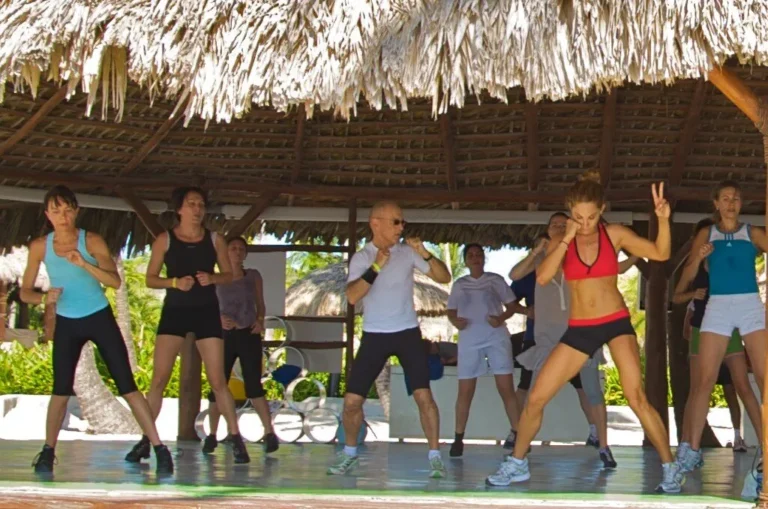Many fitness enthusiasts struggle to fit both strength training and cardio into their busy schedules. In this blog post, I will share effective techniques to combine these two necessary components in short workouts that maximize your fitness gains. By incorporating both types of exercise into quick sessions, you can enhance your performance, elevate your metabolism, and improve your overall health without spending hours at the gym. Join me as we explore the benefits and strategies for achieving an efficient workout routine that balances strength and cardio.
Key Takeaways:
- Combining strength and cardio in short workouts enhances overall fitness by improving both muscle strength and cardiovascular health.
- Quick sessions can be highly effective; aim for high-intensity intervals that maximize calorie burn and muscle activation.
- Incorporate compound movements to target multiple muscle groups simultaneously, increasing efficiency and effectiveness within limited time frames.
Benefits of Combining Strength and Cardio
Achieving a well-rounded fitness regimen is vital, and combining strength and cardio offers numerous benefits. This approach not only enhances your muscular endurance and strength but also boosts your cardiovascular health, leading to improved performance in everyday activities. I find that integrating these workouts can keep things fresh and engaging, making it easier to stick to your fitness journey over time.
Improved Overall Fitness
At the heart of combining strength and cardio lies the enhancement of your overall fitness. By incorporating both components, you develop better endurance, muscle tone, and cardiovascular health. This fusion allows you to tackle physical challenges with greater ease, promoting a healthier and more active lifestyle. I have noticed that my energy levels soar, and my body feels more capable of handling various tasks.
Time Efficiency
Cardio workouts alone can take considerable time, but when I integrate strength exercises, I can maximize my workout efficiency without sacrificing effectiveness. This combination helps you stay fit in less time, providing a comprehensive workout that targets multiple aspects of fitness simultaneously.
In fact, by blending strength and cardio, you can save valuable time while still achieving fantastic results. This means instead of spending hours at the gym, you can accomplish your fitness goals in shorter sessions, allowing for a more manageable routine. Additionally, this time-efficient approach helps maintain motivation and commitment since it fits better into a busy schedule. Prioritizing these quick but effective workouts can lead to substantial fitness improvements without overwhelming your daily life.
Designing Quick Sessions
Now, creating an effective workout plan that combines strength and cardio within a short time frame is important for maximizing your results. I recommend focusing on high-intensity bursts of activity to optimize your workouts while ensuring each session remains under 30 minutes. This approach will keep your heart rate elevated while building muscle strength, allowing you to achieve your fitness goals efficiently.
Workout Structure
The foundation of your quick sessions should be a balanced blend of strength and cardio exercises. I typically suggest a structure where you alternate between high-intensity exercises and brief recovery periods. This format not only enhances your endurance but also boosts your metabolism, making every minute of your workout count.
Exercise Selection
For selecting exercises, focus on compound movements that target multiple muscle groups while increasing your heart rate. I like to include examples such as squat jumps, burpees, and kettlebell swings. These exercises effectively blend strength training and cardiovascular conditioning, ensuring you have a well-rounded and efficient workout.
Selection of exercises is fundamental for your success in these quick sessions. I prioritize movements that engage large muscle groups, as they elevate your heart rate and promote muscular endurance. Incorporating exercises like deadlifts, push-ups, or lunges with plyometric elements such as jumping jacks or mountain climbers can dramatically enhance your overall fitness. This strategy not only saves time but also helps you to maximize calorie burn and build strength simultaneously. Ultimately, the right mix of exercises enables you to achieve better results in shorter periods.
High-Intensity Interval Training (HIIT)
For those looking to combine strength and cardio efficiently, High-Intensity Interval Training (HIIT) is a game changer. This training method alternates between short bursts of intense exercise and periods of rest or low-intensity activity. Essentially, HIIT allows you to maximize your workout time, burning calories and building endurance quickly, making it a popular choice for busy schedules.
Overview of HIIT
At its core, HIIT is designed for efficiency and effectiveness, targeting multiple muscle groups while enhancing cardiovascular fitness. By pushing your limits in short intervals, you elevate your heart rate, leading to increased metabolic rates long after your workout. This approach not only improves your speed and power but also enhances your overall fitness, making it suitable for all fitness levels.
Incorporating Strength into HIIT
With HIIT, you can seamlessly integrate strength exercises to boost muscle growth while benefiting from the cardio component. By using bodyweight movements or weights during the high-intensity intervals, I find that this combination significantly enhances my overall fitness level. This way, you not only improve your strength but also burn fat and increase endurance without spending hours in the gym.
Overview of incorporating strength into HIIT reveals that this blend allows for maximum efficiency. By focusing on compound movements such as squats and push-ups during high-intensity segments, you’re engaging multiple muscle groups simultaneously. This dual approach can result in more significant strength gains and a higher calorie burn compared to standard cardio alone. Notably, ensure you’re maintaining proper form to prevent injuries, as this workout style can be intense but rewarding when executed correctly.
Sample Workouts
Not all workouts need to be lengthy to be effective. By incorporating full-body exercises that engage multiple muscle groups alongside cardio intervals, I can get an efficient workout done in less time. These quick sessions maximize calorie burn and build strength simultaneously, making them perfect for anyone with a busy schedule.
Full-Body Strength and Cardio Routine
Cardio intervals can easily elevate the intensity of your workout. For example, I pair exercises like squats and push-ups with one-minute bursts of jumping jacks or high knees. This combination keeps my heart rate up while ensuring I’m toning all major muscle groups, making my workouts more efficient and engaging.
Targeted Strength with Cardio Finishers
With this approach, I start with focused strength exercises targeting specific muscle groups, such as deadlifts or bench presses. Following that, I incorporate high-energy cardio finishers like burpees or sprint intervals to elevate my heart rate and enhance endurance. This not only maximizes the effectiveness of strength training but also improves overall fitness.
And by focusing on strength first, I can lift challenging weights to build muscle before the cardio finishers push me to my limits. This method ensures I’m working on my strength while combining it with quick bursts of cardio to keep my workout exciting and intense. It’s a fantastic way to incorporate both elements seamlessly, achieving a comprehensive workout in minimal time.
Tips for Effective Training
To maximize your time during workouts, focus on the following tips:
- Incorporate a mix of strength and cardio exercises.
- Use compound movements for efficient strength training.
- Keep your sessions short but intense to optimize fat loss.
- Stay consistent and set realistic goals.
- Always warm up and cool down properly to prevent injury.
This will help you create a balanced approach to fitness.
Recovery Strategies
At the end of your sessions, always prioritize recovery to keep your body in peak condition. Proper nutrition, hydration, and rest are vital components of effective recovery. Incorporate stretching and foam rolling to alleviate muscle tension and enhance flexibility.
Monitoring Progress
Above all, keeping track of your improvements is important for staying motivated. I recommend using a journal or app to log your workouts, noting the weights lifted and distances run, enabling you to see your progress over time.
Due to the dynamic nature of fitness, it is important to track not just physical changes, but also performance metrics like endurance and strength enhancements. Regularly reviewing your workouts can shed light on patterns, helping you to identify what works best for your body. This practice can also prevent plateaus and mitigate the risk of overtraining. Monitoring your fitness journey will empower you and keep you focused on your goals.
Common Mistakes to Avoid
Many individuals probe combined strength and cardio sessions without addressing common pitfalls that could hinder their progress. It’s necessary to be aware of these mistakes to maximize your results and maintain a safe workout environment. By staying informed, you can create a balanced, effective exercise routine that promotes strength and endurance without unnecessary setbacks.
Overtraining
Mistakes often stem from pushing yourself too hard, leading to overtraining. You may think that longer workouts equal better results, but this can backfire. If you don’t allow your muscles adequate recovery time, you risk fatigue, decreased performance, and potential injuries. Instead, prioritize rest and listen to your body; it will reward you with improved strength and endurance over time.
Neglecting Form
Across the board, neglecting proper form during exercises can be detrimental to your fitness journey. You might feel tempted to lift heavier weights or speed up your cardio sessions, but this often leads to injury or ineffective training. Prioritizing correct techniques is vital for optimal performance and safety. You should focus on your body alignment, control, and breathing to ensure you’re working your muscles effectively without compromising your health.
Considering the importance of form, I encourage you to regularly check in with your technique during workouts. Whether lifting weights or performing high-intensity intervals, maintaining proper alignment and movement mechanics ensures you target the right muscle groups and prevent injuries. By paying close attention to your form, you not only enhance your overall performance but also make your workouts more effective, allowing for better progress toward your fitness goals.
Final Words
The balance of strength training and cardio in quick sessions is something I highly recommend for anyone looking to maximize their workout efficiency. By combining these elements, you can enhance your fitness levels while saving time. I find that integrating strength moves into cardio routines keeps my heart rate elevated and helps maintain muscle mass. You can tailor these sessions to fit your schedule and preferences, making it easier to stay consistent and engaged. Embrace this dual approach, and you’ll likely see significant improvements in your overall health and performance.
Q: How can I effectively combine strength training and cardio in a single workout session?
A: To combine strength training and cardio efficiently, you can use a method called circuit training. This involves performing a series of strength exercises back-to-back with minimal rest in between, followed by short bursts of cardio. For instance, alternate between weightlifting moves like squats or bench presses with high-intensity cardio exercises such as jumping jacks or burpees. Aim for a session that lasts 30-45 minutes, which can provide both strength benefits and cardiovascular conditioning.
Q: What are the benefits of integrating strength and cardio workouts?
A: Integrating strength and cardio workouts offers numerous advantages. Firstly, it enhances overall fitness by improving both muscular strength and cardiovascular endurance. Secondly, this combination can help with weight management as it burns calories efficiently and can lead to increased metabolism post-workout. Lastly, it keeps workouts engaging by mixing different exercise modalities, which can help reduce boredom and increase adherence to a fitness routine.
Q: How often should I combine strength and cardio workouts in my weekly routine?
A: The frequency of combining strength and cardio workouts depends on individual fitness levels and goals. For general fitness, aiming for 2-3 sessions per week can be effective. If your focus is on weight loss or improving stamina, consider increasing to 4-5 sessions weekly. Ensure to include rest days in your routine to allow for recovery, and listen to your body to make adjustments as needed based on how you feel after each session.











































